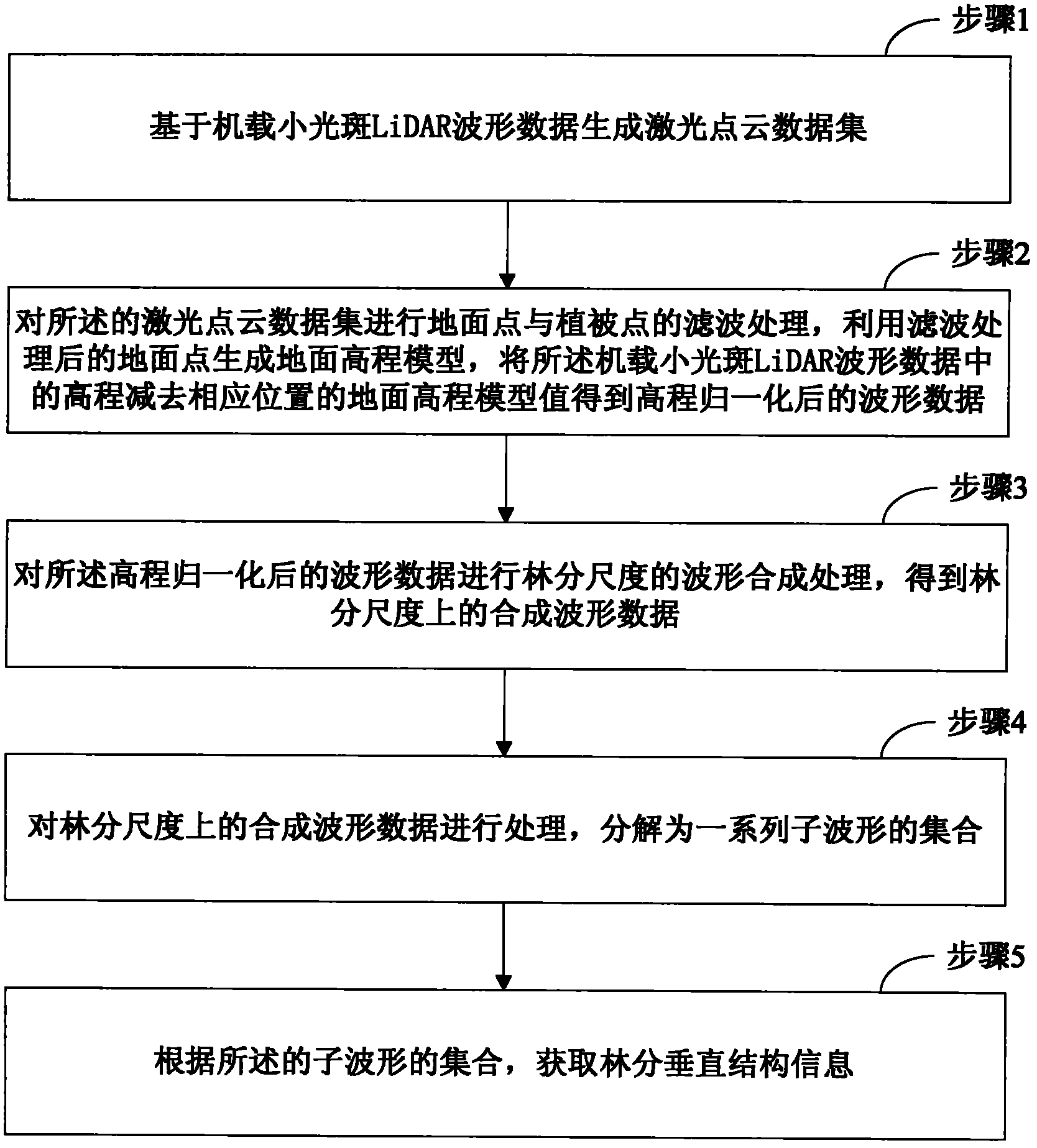Method for extracting forest stand vertical structure parameters on basis of airborne small-facula LiDAR (light detection and ranging) waveform data
A waveform data and vertical structure technology, applied in the direction of electromagnetic wave re-radiation, optical device, radio wave measurement system, etc., can solve the problems of difficult to describe vertical structure and low accuracy of standing vertical structure
- Summary
- Abstract
- Description
- Claims
- Application Information
AI Technical Summary
Benefits of technology
Problems solved by technology
Method used
Image
Examples
Embodiment Construction
[0014] The present invention provides a method for extracting stand vertical structure parameters from airborne small-spot LiDAR waveform data, the implementation of which is as follows figure 1 As shown, it specifically includes the following operations:
[0015] Step 1. Generate a laser point cloud dataset based on the airborne small-spot LiDAR waveform data;
[0016] For the airborne small-spot LiDAR waveform data obtained during the flight, through peak detection, Gaussian decomposition or deconvolution methods, the files corresponding to each waveform data reflecting the feature points of the ground objects can be extracted. These files reflecting the feature points of the ground objects constitute the laser point cloud dataset.
[0017] Step 2, carry out the filter processing of ground point and vegetation point to described laser point cloud data set, utilize the ground point after filter processing to generate ground elevation model, subtract the elevation in the desc...
PUM
 Login to View More
Login to View More Abstract
Description
Claims
Application Information
 Login to View More
Login to View More - R&D
- Intellectual Property
- Life Sciences
- Materials
- Tech Scout
- Unparalleled Data Quality
- Higher Quality Content
- 60% Fewer Hallucinations
Browse by: Latest US Patents, China's latest patents, Technical Efficacy Thesaurus, Application Domain, Technology Topic, Popular Technical Reports.
© 2025 PatSnap. All rights reserved.Legal|Privacy policy|Modern Slavery Act Transparency Statement|Sitemap|About US| Contact US: help@patsnap.com



